Skip to content
DAY 9 Isla Espiritu Santo and Restaurant Tres Virgenes
Sunday, July 22, 2012 (Day 9)
Today is our ‘island day’ featuring a boat ride from La Paz north to Isla Espiritu Santo and Isla Partida at the north end. We enjoy the scenery of La Paz from the bay and of El Mogote with its failed hotel and housing development (El Mogote is the sand bar peninsula facing the city of La Paz). Next, we go past Pichilingue and the now abandoned U.S. Navy coaling station that operated here from 1866 to 1925. A bit past Pichilingue is Bahía Balandra with its popular ‘mushroom rock’ we visited from land on Friday. Next we zoom across the San Lorenzo Channel to Isla Espiritu Santo. On the southwest coast of the island is Bahía San Gabriel with its ruins of a pearl oyster farm from the early 1900’s. We cannot beach the boat because of the rocks, so we go over the side and swim to shore to have a closer look at the immense rock works there.

Leaving La Paz, some pretty large yachts are passed.

Looking back at La Paz, see the church steeples?
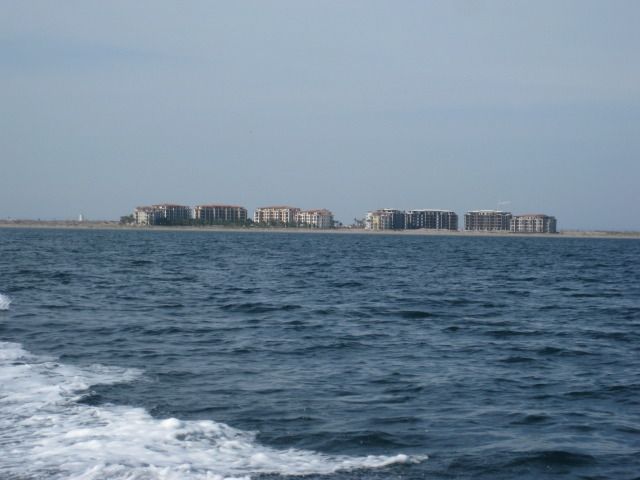
The doomed development on El Mogote.

La Paz gets smaller as we cruise north.

Ruins of the American Navy coaling station, closed in 1925.

The truck and car ferry returning to La Paz from the mainland.

The mushroom rock as seen from the sea.
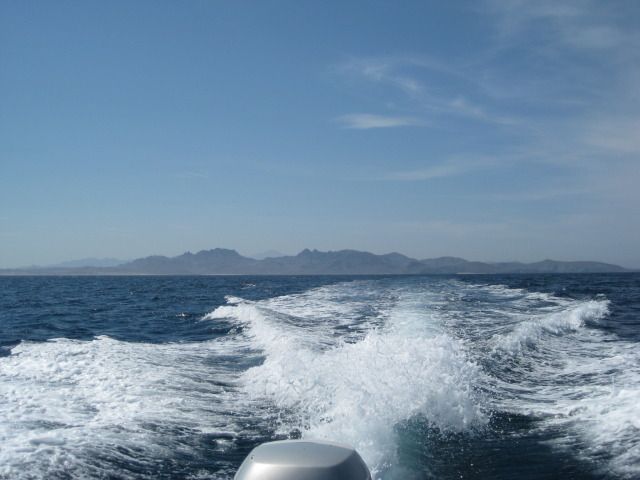
Crossing the San Lorenzo Channel.

The San Gabriel pearl-oyster ruins of the early 1900’s, on Isla Espiritu Santo.

Steve, Zully, Jorge, Nikki.
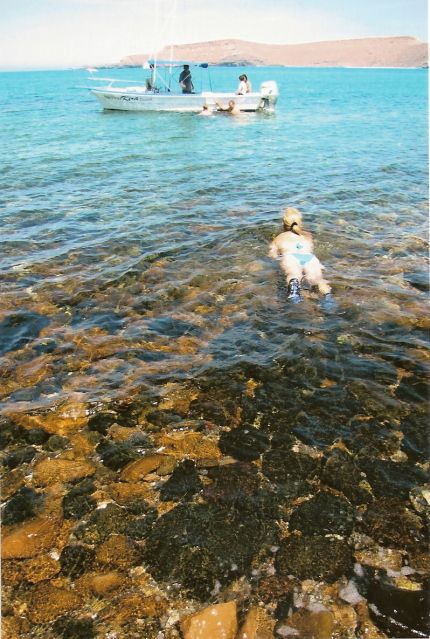
Returning to our boat.
With some effort (mostly on my part), we get back into the boat and continue to the north end of the island and its nearly connected twin, Isla Partida. Here are many boats bringing people to some clear water shared by sea lions… and we put on masks and fins and go in!
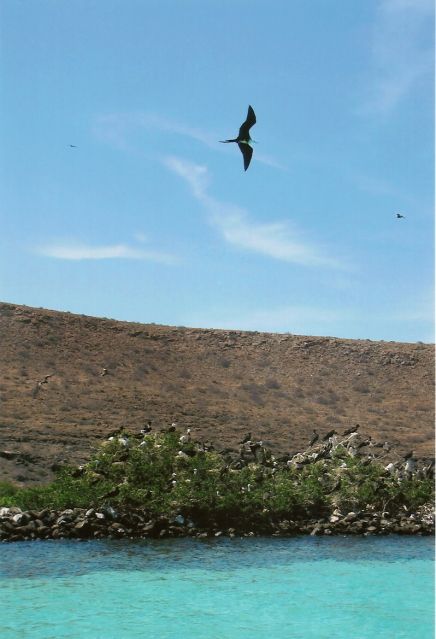

Frigates and their nesting area.



Nearing the snorkeling area, we join many other boats.


After our snorkeling experience, we cruised over to a sand beach on the island for lunchtime.

Fishermen’s huts on the island.
It was the highlight of the day to swim with the tropical fish and the thrill of the day (for me) when a sea lion came within ten feet of me, showing its teeth! There is a fine line where the sea lions don’t want the humans any closer to their spot, and that is fine with me! Following our dive time, we and other boats went to a nearby beach to have lunch and swim in the sand bottom bay.

On the way back to La Paz, we stop to have a close look at a set of cliff caves called ’the mask’, and the photos will illustrate why the name. The first Spanish sailors to come to California should have been warned by it, as most of them died in their attempt to land at La Paz. They were unwelcome by the Pericú natives, and the leader Fortún Jimenez and 22 of his crew were killed when they landed to take on water. The survivors sailed back to the mainland and word eventually reached Cortes about the ’island’ they discovered, rich with pearls… The following year (1535), Cortes personally came to La Paz, (he named the bay ’Santa Cruz’) to start a colony and harvest the black pearls. The colony failed and most did not survive the two years it was reported to have lasted.

This was a wonderful day and it sure was the icing on the cake of our time in La Paz, thanks to Steve and Zully! It was only fitting for us to take them out to dinner at the famous restaurant ‘Las Tres Virgenes’ (alta cocina peninsular) owned by a friend and fellow Baja Nomad, ‘Jesse’. Here is what I posted on Facebook:
“We were in La Paz last month and came to Las Tres Virgenes with our La Paz friends Steve and Zully. The service and the food were OUTSTANDING, AAA#1. I am telling all my Baja bound friends that when in La Paz, they should treat themselves to a dinner here! My wife had the rib-eye and it was more of a prime rib and she said was easily the best she has ever eaten. Between the four of us, we could sample several offerings. The lamb taco appetizer was an awesome start to a great meal. My hat’s off to Jesse and his brother Pedro for an outstanding restaurant and I only wish it wasn’t 900 miles away from my home!”
The address is Madero 1130, Colonia Central C.P. 23000 La Paz BCS, Mexico. This is just a couple blocks up the hill from the Malecon, and north of the church. Telephone (612)123-2226 and they have a Facebook page, where I just posted the above comments.
Sadly, Jesse wasn’t there, but his brother Pedro took good care of us and got Jesse on the phone so I could chat with him. It was a repeat of the last time I came to his restaurant (in Tijuana, back in 2006) and he was gone that day, but I spoke to him then on the phone.
Well, it was a fantastic time in La Paz and the Cape region the past four full days. Tomorrow we head back north with plans to overnight at Bahia Concepcion and then head out the Vizcaino Peninsula to meet Blanca and Les at La Bocana then return to Shari and Juan’s bed and breakfast at Bahia Asuncion.
DAY 10, North to Ligüí, Loreto, and Bahia Concepcion
Monday, July 23, 2012 (Day 10)
We have a final look at the beautiful back yard of Bajatripper’s and say our goodbyes to Steve and Zully. We are on the road at 9:30am and head out of La Paz. There is no inspection at the checkpoint outside of town, as we are waved on through. About 70 miles from La Paz is a small town of Las Pocitas and I spot some interesting furniture on display, so we stop. It is the shop of Manuel and he permits me to take photos of his arts and crafts display. One item of interest is an artillery shell form Bahia Magdalena. Bajatripper had told me about how the U.S. Navy practiced shelling one of the islands of Magdalena Bay (without Mexico’s approval), many years ago.


Stopped here in Las Pocitas.

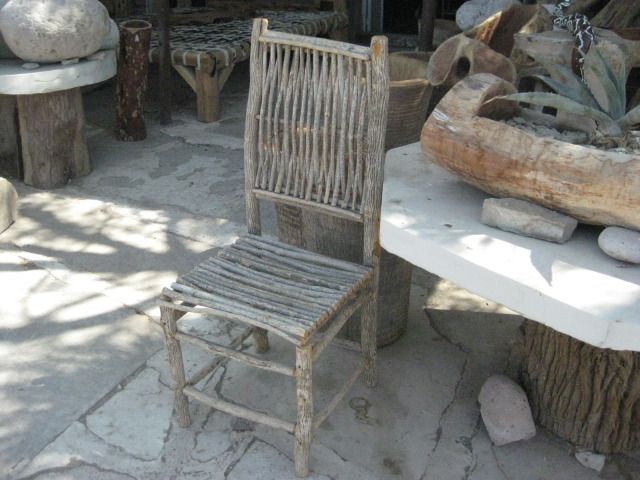




U.S. Navy shelling a Baja island, maybe 100 years ago? [was in 1908]
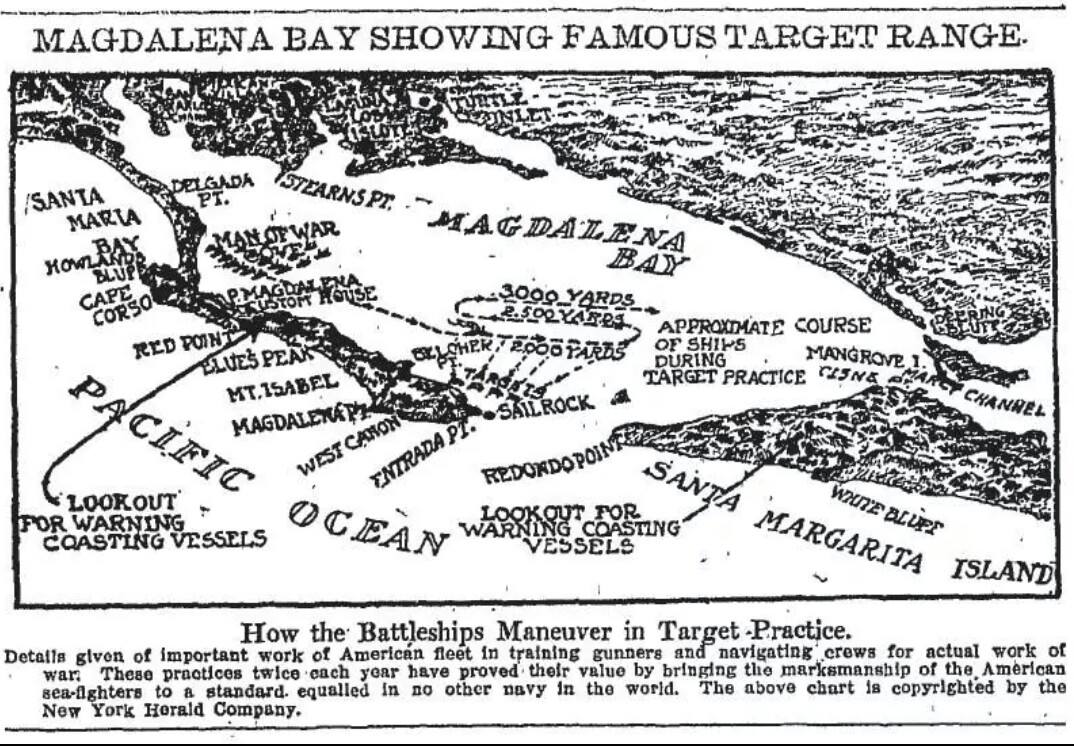
We are back on the road at 11:15am. I note the road to Mission San Luis Gonzaga is at Km. 195 ½ and would like to see it in person one day, but I know we need to keep moving in order to set up camp before dark tonight. The 14th California mission (est. in 1737) will have to wait until the next trip!

We enter Ciudad Constitución and the highway becomes a divided multi lane affair at Km. 209. There have been repeated reports of hungry city cops issuing tickets for the slightest or even no altercations. This was our second time passing through this city on this trip, and no police were even seen, let alone provided us any harassment either time. The highway to Puerto San Carlos is at Km. 212 and we soon are out of Constitución. The highway remains 4 lanes wide for the next 16 miles to Ciudad Insurgentes, where Highway #1 turns to the east to cross over to the gulf coast. It is 12:31 at Insurgentes, as we keep moving back into the desert.

Pitahaya dulce cactus. Sweet pitaya/pitahaya cactus fruit.



Pitahaya agria cactus. Despite the name (Sour pitaya), its fruit is also excellent.
I see lots of pitahaya dulce cactus, but the fruit is not yet mature. We pull off to take photos and see a dead cow, that is mostly bones. Elizabeth wants to save the horns; she doesn’t ask for much.

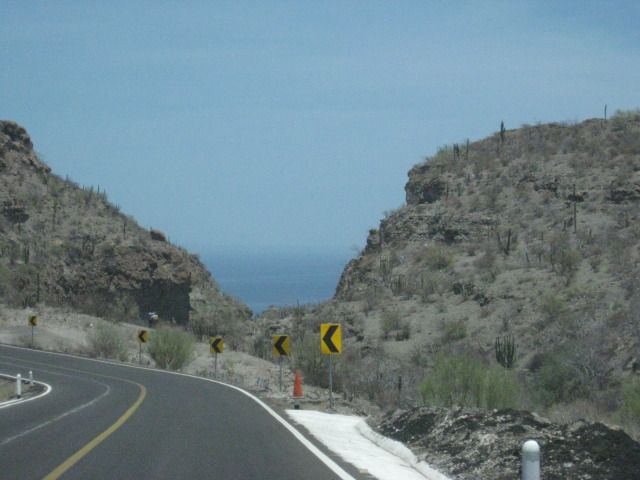


Not too much further we reach the top of the sierra, and the steep drop down to the coast. Ligüí is not far from the bottom of the grade, so we pull off at Km. 84 ½ (by the school) and drive 0.6 mile to the monument to the 3rd California Spanish mission, San Juan Bautista de Ligüí/ Malibat (est. in 1705).

The only fork driving towards the mission and beach of Ligüí. To the right goes to Ensenada Blanca.


The mission foundation was totally washed away in 2001 by the changing arroyo, I took photos of the rubble back then. By 2009, on my next visit, people erected a cross and a parking area just beyond were the mission once stood, as a monument. Today we find that the arroyo has widened more and has started eating away at the new memorial site!


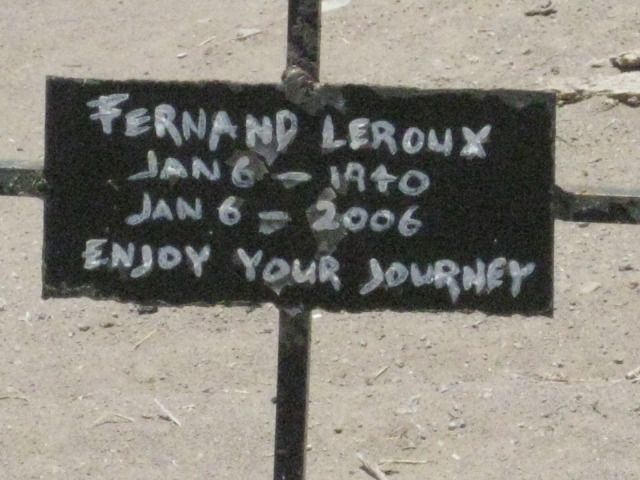
There is a new grave across the road from the memorial park. We continue the half mile more to the beach of Playa Ligüí and see some property owner has almost made the beach unreachable with his new fence right up to the palapas at this Playa Publica.

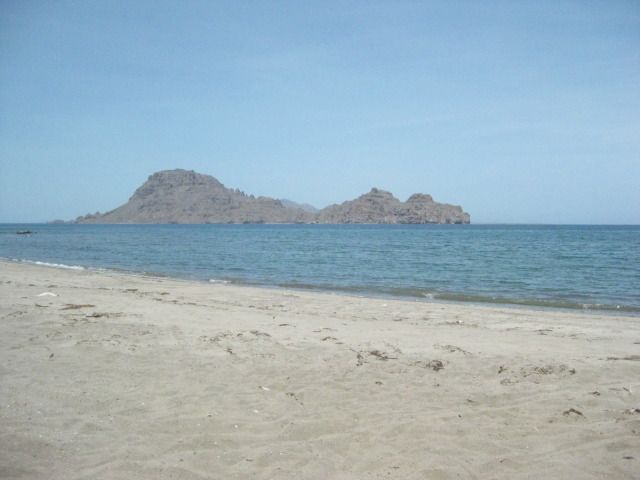


We continue on from Ligüí at 2 pm and arrive in Loreto at 2:30. First order is to top off the gas tank, as it has been 228 miles since La Paz. It takes 600 pesos to fill with 59.7 liters. Now with nearly all of those miles on the highway, my mileage would typically be 17-18 mpg with the load I am carrying. My first clue that the pumps at this Loreto Pemex (on the highway, by the entrance to town) are not accurate is the mileage with that many liters was only 14.4 mpg. When I filled up in La Paz after driving south, my mileage was 16.8 mpg. Oh well, nothing to do, the gas is still a great deal at $2.95 a gallon.


Just a mile north, on the west side of the highway, is the great fruit restaurant El Cañaveral, run by ‘Charlie’. We each order the fruit salad (again) and I also try the Liquado de Mamey which is a smoothie made with the mamey sapote. What is a mamey sapote? Well, it is native to southern Mexico and Central America, and is the national fruit of Cuba (either for the sweet taste or that it is red inside)! FRUITMAVEN and GOOD EATN
Those are a couple of web sites showing them. I described the mamey liquido like a cross between a chocolate and vanilla milk shake. Yum!! We also had a serving of coconut horchata to cleanse the palate.

The south end of Bahía Concepción.
It is 55 miles from Loreto to Playa La Perla on Concepción Bay. Along the way is a military checkpoint, with the typical questions and search and then we saw several huge dust devils to the west of the highway.

The old Baja main road, carved into the hillside at Bahia Concepcion.
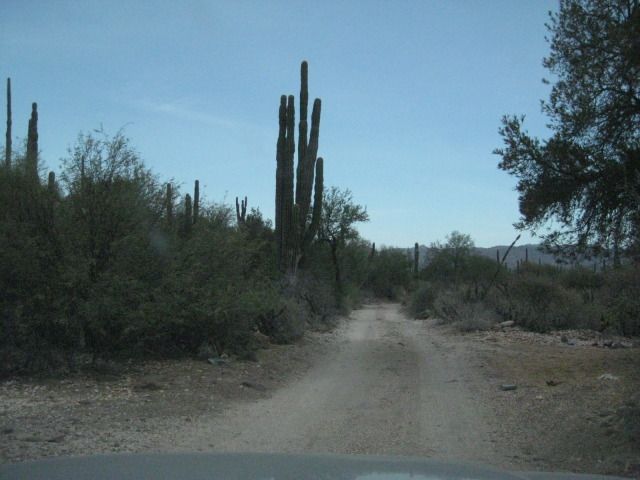
Driving into Playa La Perla, we use some of the old main Baja highway. This was the road to La Paz before 1970 when the new highway roadbed was built from Loreto north to Santa Rosalía. The entire new highway was completed in late 1973.

We arrived at La Perla on Bahia Concepcion about sunset. The other family that was there last week were gone, we were all alone… until a seagull made himself our friend and actually would take food from Elizabeth’s hand! It took a while, mind you… but it was pretty cool.




Tomorrow, we drive across to the Pacific coast of Baja, and meet new friends at La Bocana and see old friends at Bahia Asuncion!
Pages: 1 2 3 4 5 6 7


























































